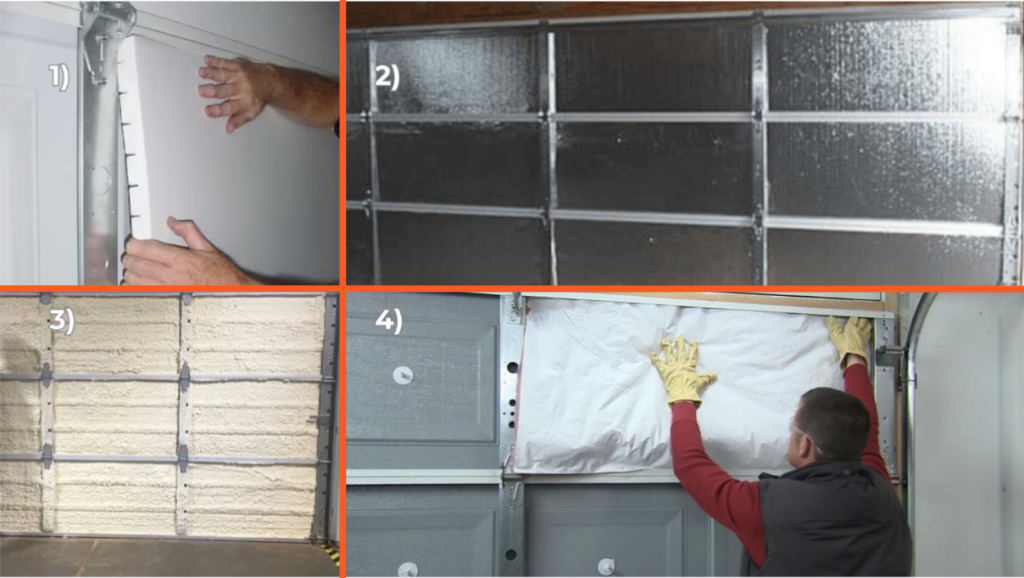Methods of Insulating Garage Doors
There are several means to insulate your garage door, and each method has its pros and cons
Insulation Kits
Many manufacturers sell insulation kits that are specifically designed for garage doors. These kits might include insulation panels or foam boards that you can install on your own.
Reflective Foil Insulation
Reflective foil insulation, made from aluminum foil with a layer of insulation, is attached to the inside of the garage door to reflect heat away from the garage.
Spray Foam Insulation
This type of insulation becomes a seamless, airtight barrier if applied to the interior of the garage door. It also expands to fill cracks and gaps, creating excellent thermal insulation and muffling sound.
DIY Insulation
Finally, consider a more affordable option, which is do-it yourself insulation. You can save more money through the use of fiberglass bats or rigid foam boards, but this method requires more time and skill.




Putting in an insulated garage door is somewhat easy but a very effective project for a domicile. When you do it right as shown previously that indeed makes all of the insulation difference! Fortunately, now in addition you have four different kinds to choose from When the time comes Make sure now that no matter what approach you take whether it kit insulates materials with very high reflectivity levels available on site to spray foam (or do-it-yourself), make certain your garage door is as tight and efficient As can be. Heeding this illustrated paint by number guide will send you well on your way toward a more comfortable living area.